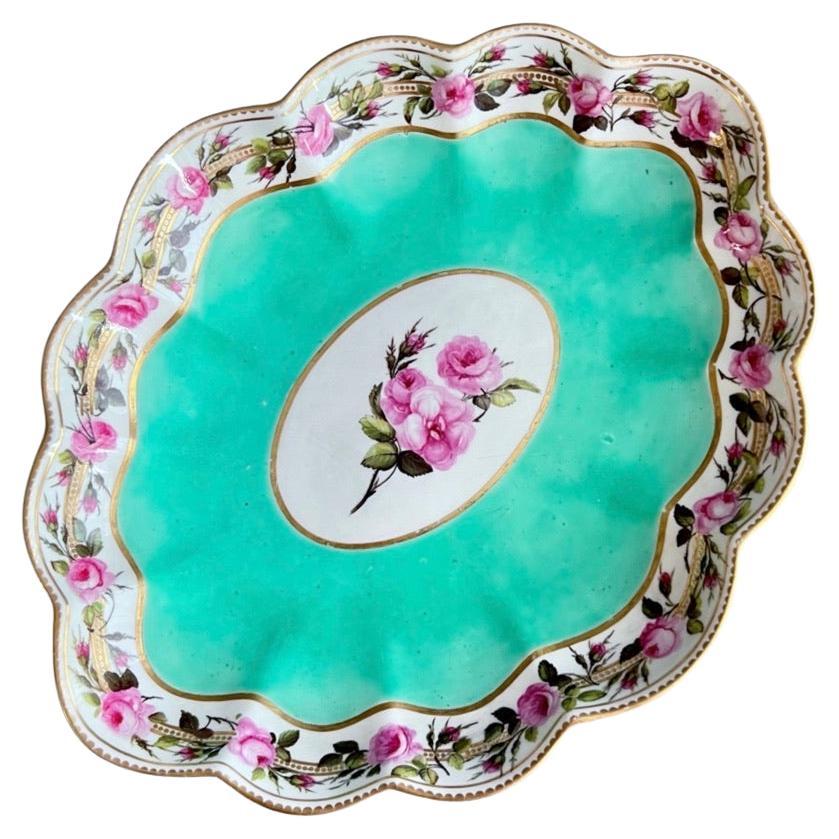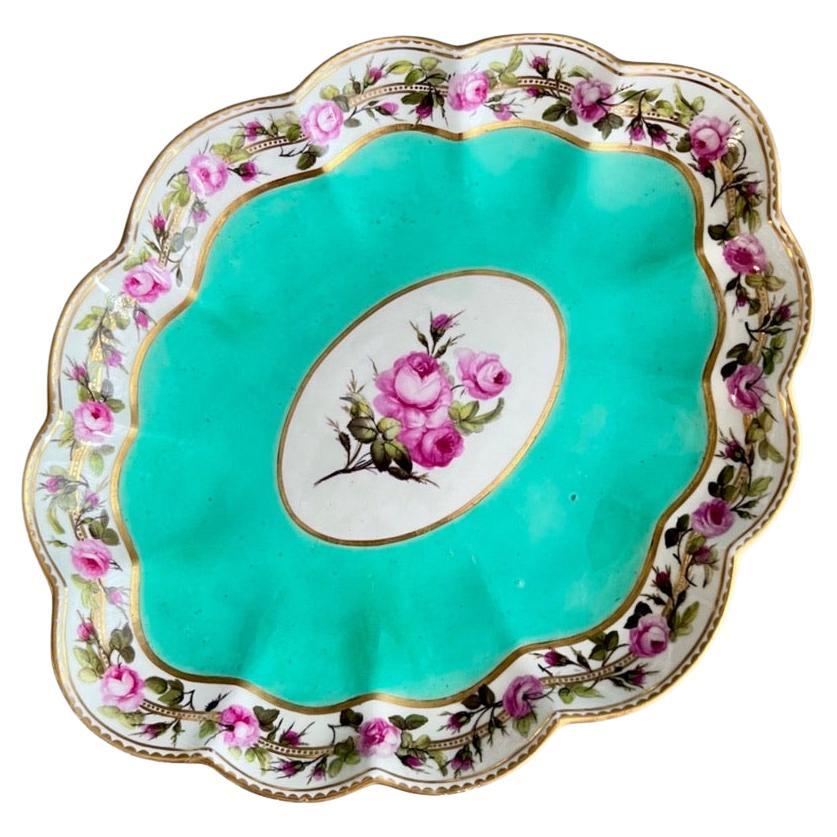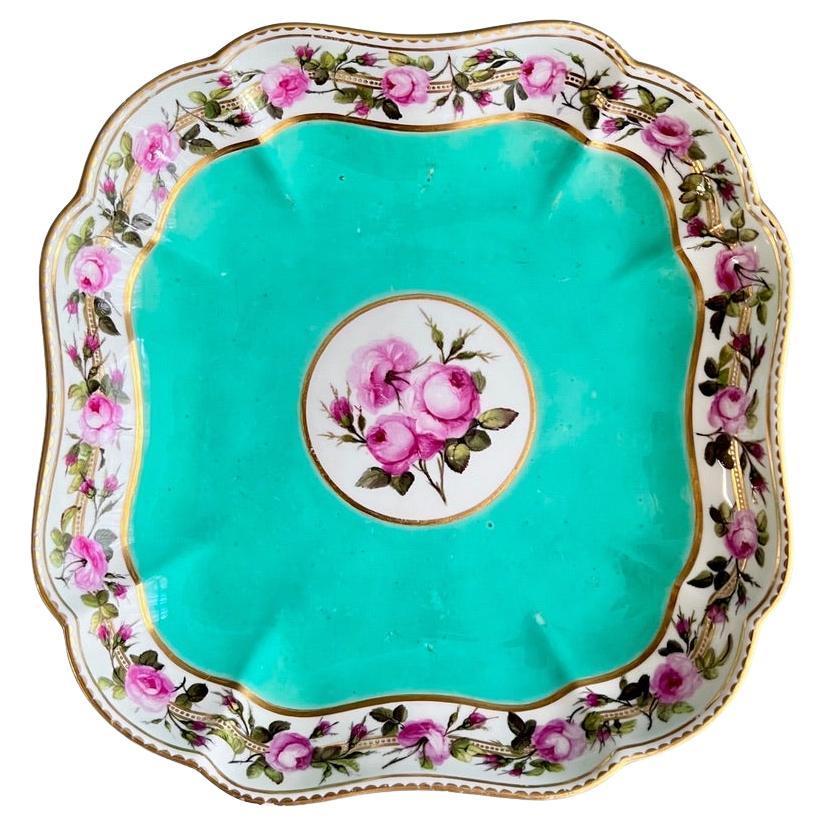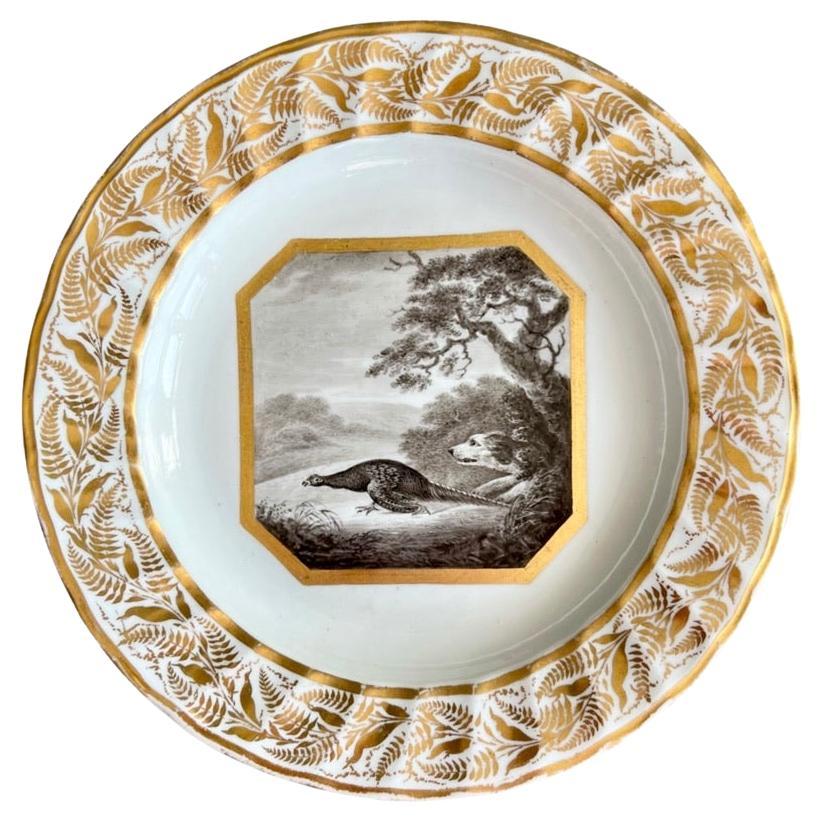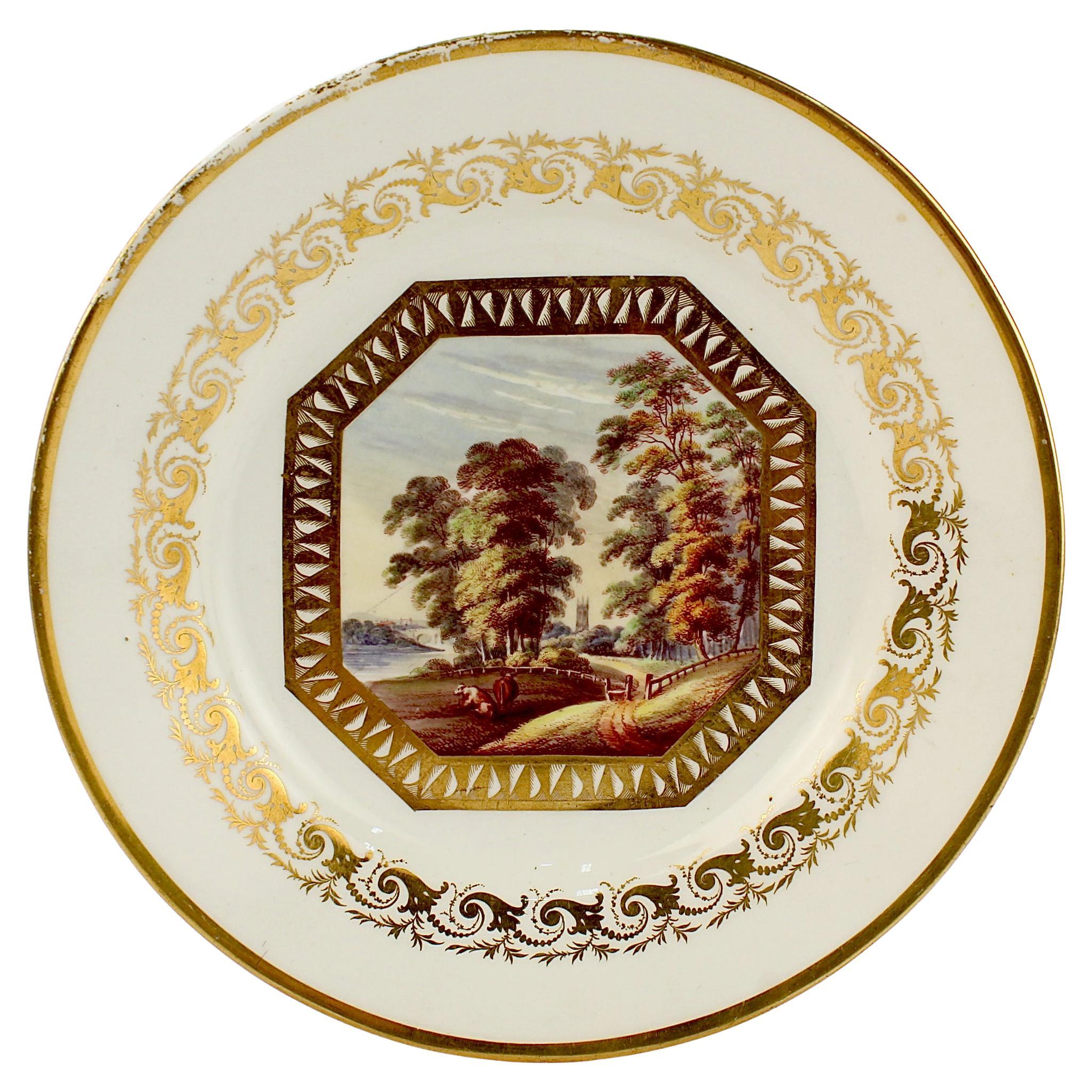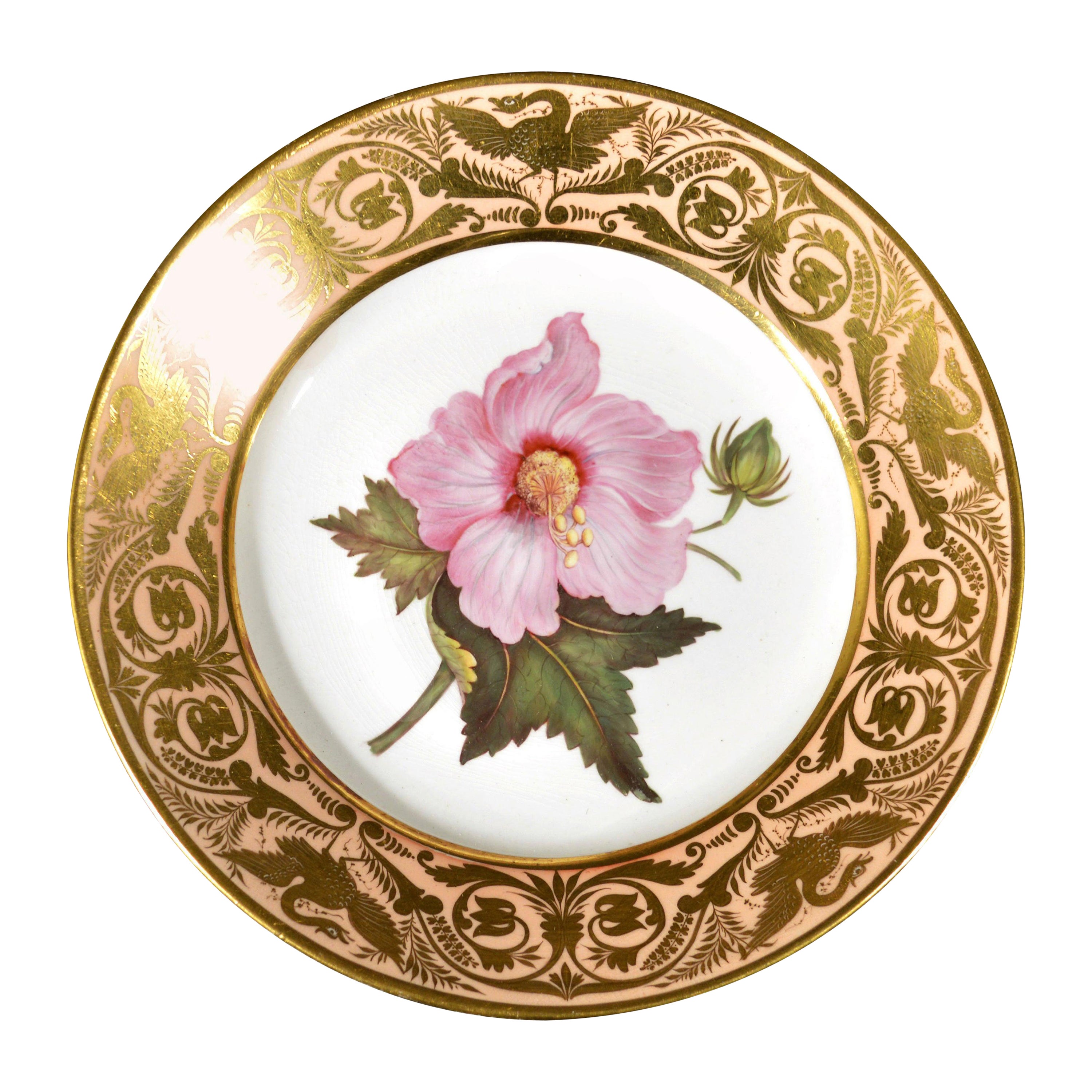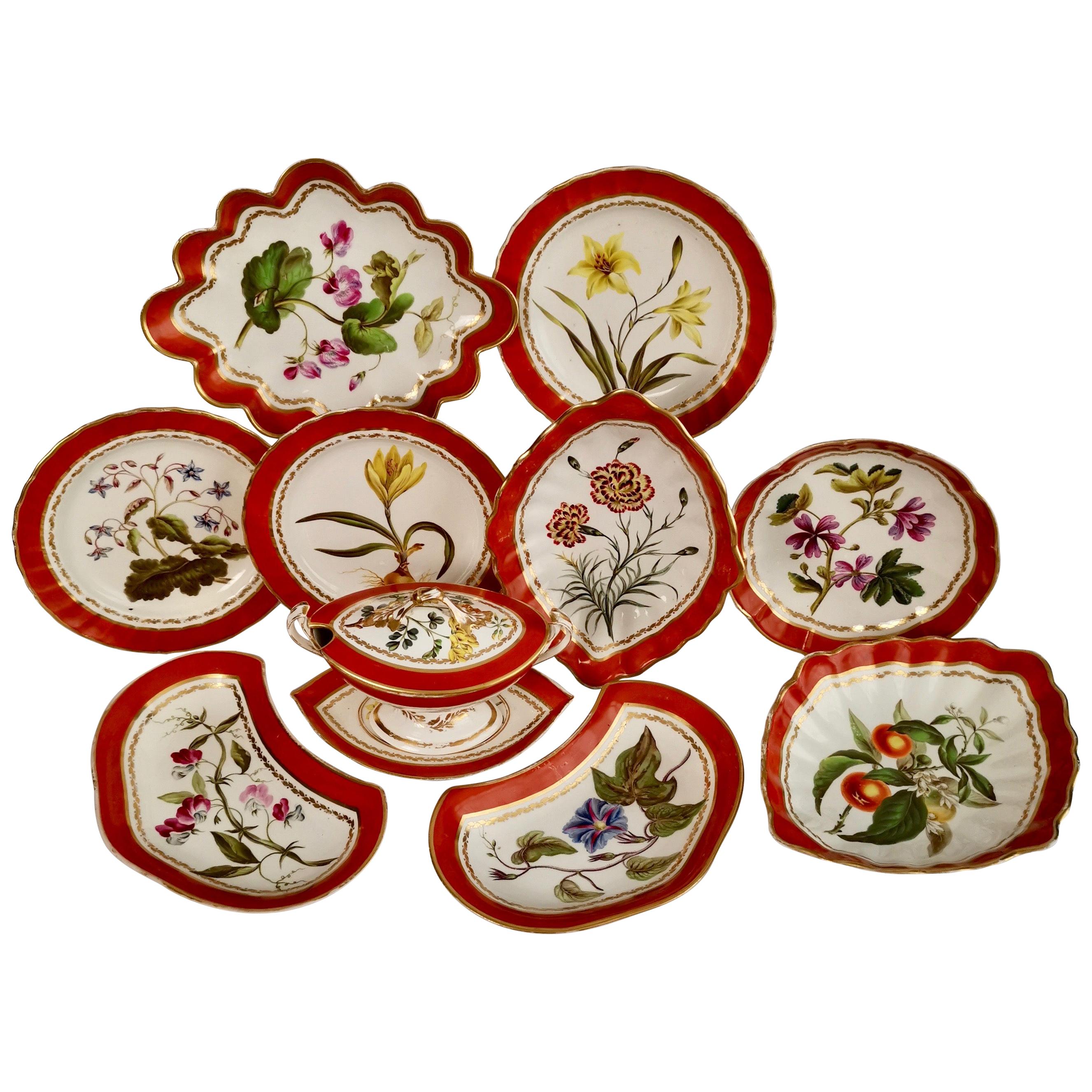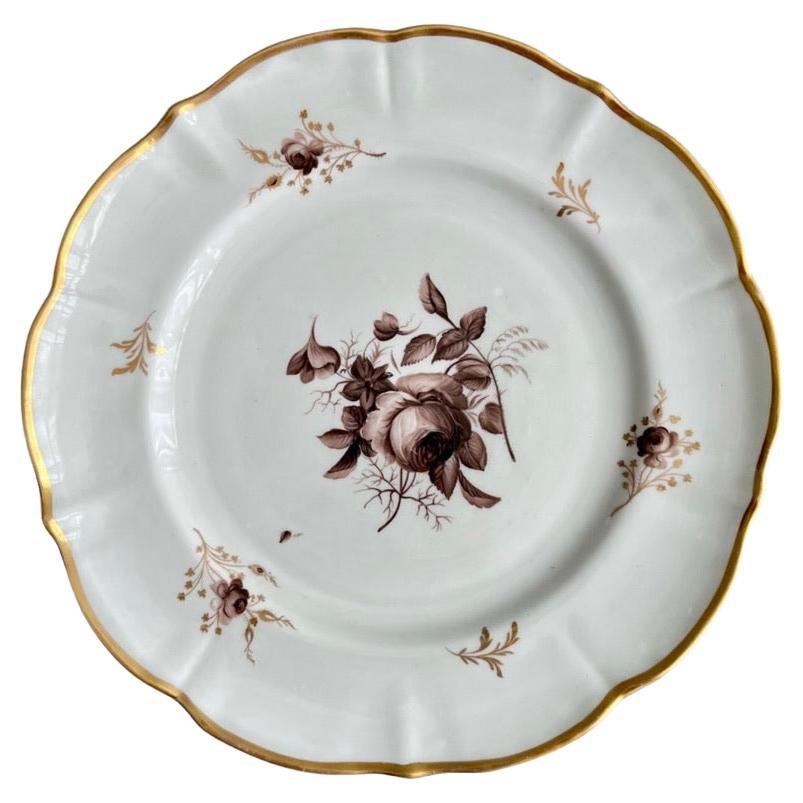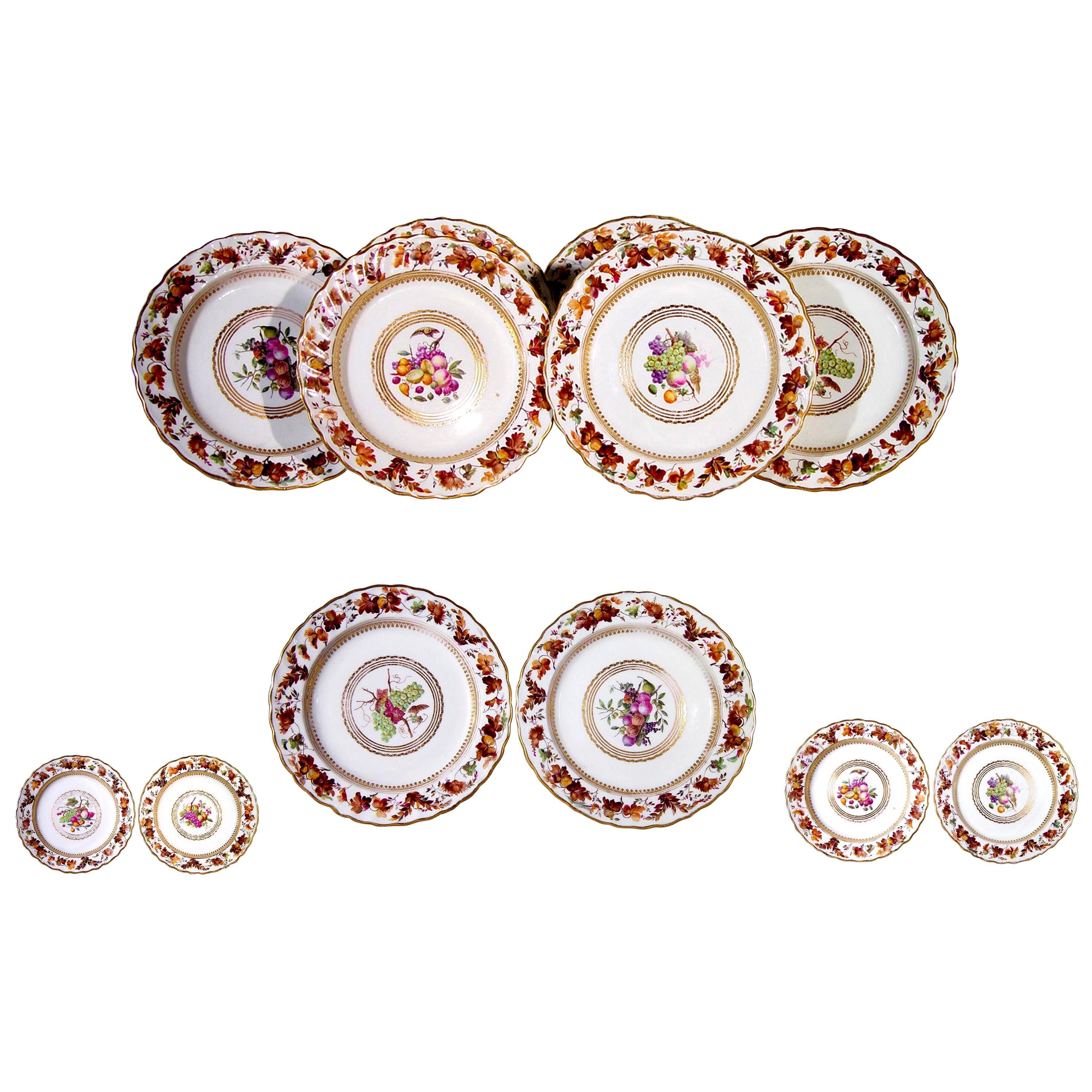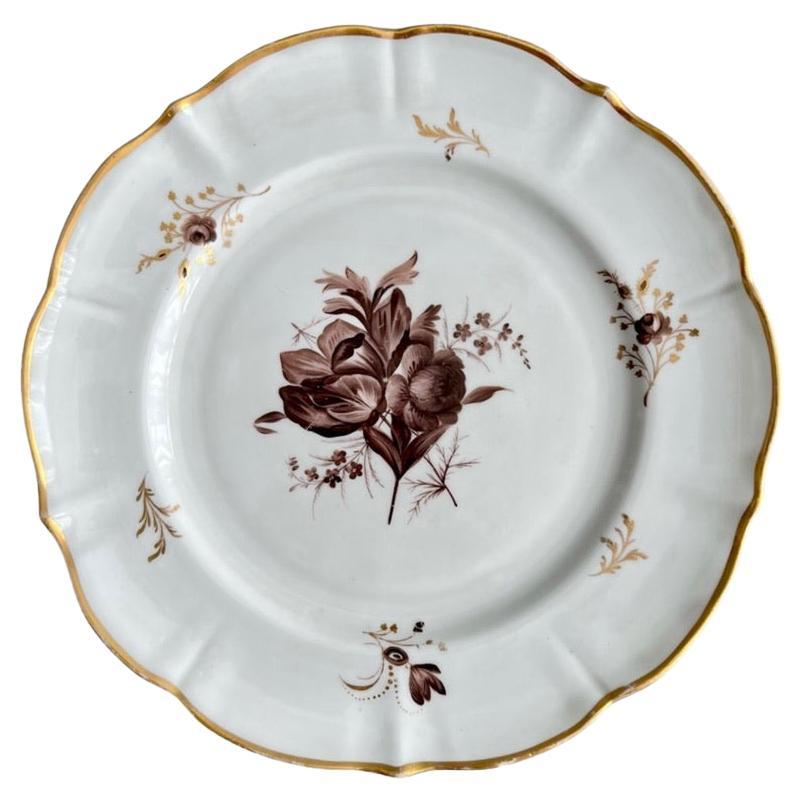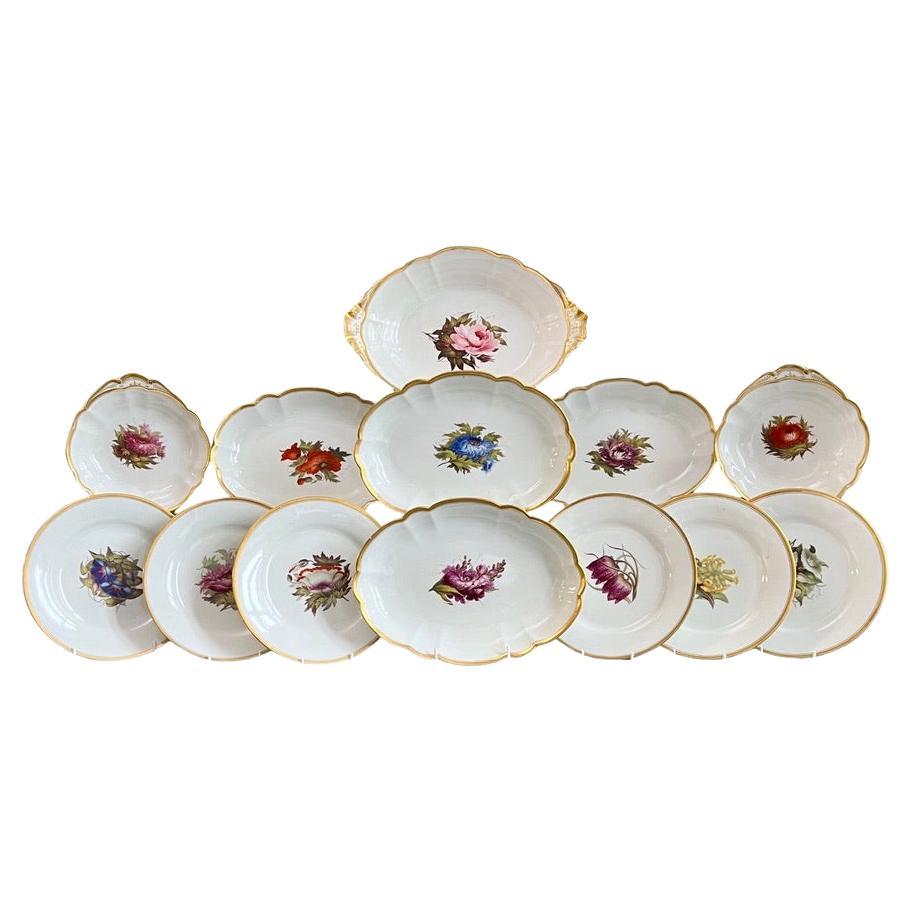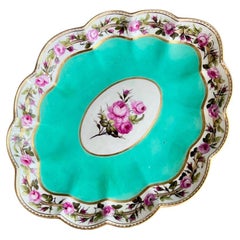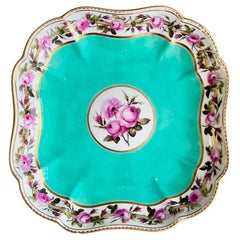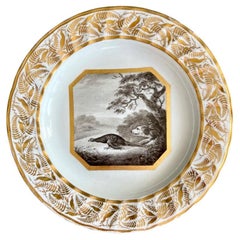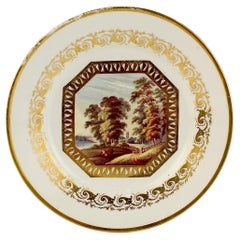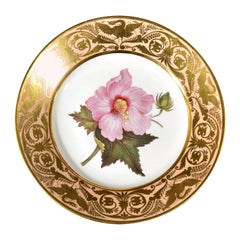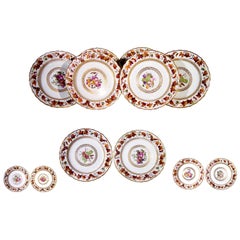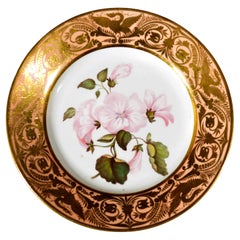
Derby Plate, Camden Service, William Billingsley Roses on Green, 1795
View Similar Items
Want more images or videos?
Request additional images or videos from the seller
1 of 16
Derby Plate, Camden Service, William Billingsley Roses on Green, 1795
About the Item
- Creator:Derby (Maker)
- Dimensions:Height: 0.75 in (1.91 cm)Diameter: 9.65 in (24.52 cm)
- Style:George III (Of the Period)
- Materials and Techniques:
- Place of Origin:
- Period:1790-1799
- Date of Manufacture:ca 1795
- Condition:Wear consistent with age and use. in excellent antique condition without any damage, repairs or crazing.
- Seller Location:London, GB
- Reference Number:Seller: HP-DER03a1stDibs: LU4805140717102
About the Seller
5.0
Gold Seller
Premium sellers maintaining a 4.3+ rating and 24-hour response times
Established in 2016
1stDibs seller since 2019
225 sales on 1stDibs
Typical response time: 2 hours
Authenticity Guarantee
In the unlikely event there’s an issue with an item’s authenticity, contact us within 1 year for a full refund. DetailsMoney-Back Guarantee
If your item is not as described, is damaged in transit, or does not arrive, contact us within 7 days for a full refund. Details24-Hour Cancellation
You have a 24-hour grace period in which to reconsider your purchase, with no questions asked.Vetted Professional Sellers
Our world-class sellers must adhere to strict standards for service and quality, maintaining the integrity of our listings.Price-Match Guarantee
If you find that a seller listed the same item for a lower price elsewhere, we’ll match it.Trusted Global Delivery
Our best-in-class carrier network provides specialized shipping options worldwide, including custom delivery.More From This Seller
View AllDerby Lobed Dish, Camden Service, William Billingsley Roses on Green, 1795 (1)
By Derby
Located in London, GB
This is a very rare oval lobed dish from the famous "Earl of Camden" service made by the Derby Porcelain Company in 1795. The service was painted with typical English roses by William Billingsley, one of Britain's most famous painters, and responsible for exactly this type of rose painting on British porcelain.
There are more items available in this pattern, see separate listings. To keep these items together we'd be happy to offer a discount on multiple purchases - please ask!
The Derby Porcelain Company, later called Royal Crown Derby, is currently the oldest British porcelain factory still in production. The Derby pottery was one of the most prominent potteries right from the start of English porcelain production in the mid 1700s to today, and the factory went through many iterations. In the 1820s, it was called "Bloor Derby" as it came under the ownership of Robert Bloor; this factory later closed but its legacy was continued under the ownership of a group of employees, and later this was merged into a new factory called Royal Crown Derby, which is still in operation today and still carries forward some of the oldest patterns that have made it famous over the centuries.
William Billingsley was a brilliant but notoriously difficult man who left behind a trail of debts, broken hearts and mystery - but he was also one of the most important people in the history British porcelain. Billingsley revolutionised the way British decorators painted flowers; he added a freedom and artistry that now singles out British flower painting, and he created a new technique for painting roses, which you can see in this design. Billingsley worked at Derby, Worcester and Mansfield. He also set up his own potteries in Pinxton and Nantgarw and created some of the best porcelain ever made, but racking up great debts, before running off in the dead of night and ending his days at Coalport painting flowers.
Items painted by William Billingsley are rare and very much in demand - together with Thomas Baxter's work they are probably among the most desired pieces of British porcelain.
The Earl of Camden service was a huge service ordered by Lady Camden in 1795. It had to be produced under great, and unrealistic, time pressure and was notoriously late, much to Lady Camden's chagrin. She wanted the service to be produced by only the best artisans and therefore William Billingsley was tasked with painting all items - but it is thought that when it was clear the deadline was impossible to make, he enlisted the help of John Brewer for some of the last items, such as the ice pails. This plate shows the typical "Billingsley" roses: a beautiful naturally flowing garland of English roses interspersed with buds, trailing around a crisp gilt ribbon. The way the roses link into each other, the way each individual one is completely different, the light effects achieved by rubbing out some of the pink paint, and the very fine buds and foliage all point to these being from Billingsley's hand.
This dish came together with a plate that bears labels that point to a rich provenance: the Doris Wheatley Collection, the Daniel Collection, Derek Gardner...
Category
Antique 1790s English George III Serving Bowls
Materials
Porcelain
Derby Oval Dish, Camden Service, William Billingsley Roses on Green, 1795 (2)
By Derby
Located in London, GB
This is a very rare oval lobed dish from the famous "Earl of Camden" service made by the Derby Porcelain Company in 1795. The service was painted with typical English roses by William Billingsley, one of Britain's most famous painters, and responsible for exactly this type of rose painting on British porcelain.
There are more items available in this pattern, see separate listings. To keep these items together we'd be happy to offer a discount on multiple purchases - please ask!
The Derby Porcelain Company, later called Royal Crown Derby, is currently the oldest British porcelain factory still in production. The Derby pottery was one of the most prominent potteries right from the start of English porcelain production in the mid 1700s to today, and the factory went through many iterations. In the 1820s, it was called "Bloor Derby" as it came under the ownership of Robert Bloor; this factory later closed but its legacy was continued under the ownership of a group of employees, and later this was merged into a new factory called Royal Crown Derby, which is still in operation today and still carries forward some of the oldest patterns that have made it famous over the centuries.
William Billingsley was a brilliant but notoriously difficult man who left behind a trail of debts, broken hearts and mystery - but he was also one of the most important people in the history British porcelain. Billingsley revolutionised the way British decorators painted flowers; he added a freedom and artistry that now singles out British flower painting, and he created a new technique for painting roses, which you can see in this design. Billingsley worked at Derby, Worcester and Mansfield. He also set up his own potteries in Pinxton and Nantgarw and created some of the best porcelain ever made, but racking up great debts, before running off in the dead of night and ending his days at Coalport painting flowers.
Items painted by William Billingsley are rare and very much in demand - together with Thomas Baxter's work they are probably among the most desired pieces of British porcelain.
The Earl of Camden service was a huge service ordered by Lady Camden in 1795. It had to be produced under great, and unrealistic, time pressure and was notoriously late, much to Lady Camden's chagrin. She wanted the service to be produced by only the best artisans and therefore William Billingsley was tasked with painting all items - but it is thought that when it was clear the deadline was impossible to make, he enlisted the help of John Brewer for some of the last items, such as the ice pails. This plate shows the typical "Billingsley" roses: a beautiful naturally flowing garland of English roses interspersed with buds, trailing around a crisp gilt ribbon. The way the roses link into each other, the way each individual one is completely different, the light effects achieved by rubbing out some of the pink paint, and the very fine buds and foliage all point to these being from Billingsley's hand.
This dish came together with a plate that bears labels that point to a rich provenance: the Doris Wheatley Collection, the Daniel Collection, Derek Gardner...
Category
Antique 1790s English George III Serving Bowls
Materials
Porcelain
Derby Square Dish, Camden Service, William Billingsley Roses on Green, 1795
By Derby
Located in London, GB
This is a very rare square dish from the famous "Earl of Camden" service made by the Derby Porcelain Company in 1795. The service was painted with typical English roses by William Billingsley, one of Britain's most famous painters, and responsible for exactly this type of rose painting on British porcelain.
There are more items available in this pattern, see separate listings. To keep these items together we'd be happy to offer a discount on multiple purchases - please ask!
The Derby Porcelain Company, later called Royal Crown Derby, is currently the oldest British porcelain factory still in production. The Derby pottery was one of the most prominent potteries right from the start of English porcelain production in the mid 1700s to today, and the factory went through many iterations. In the 1820s, it was called "Bloor Derby" as it came under the ownership of Robert Bloor; this factory later closed but its legacy was continued under the ownership of a group of employees, and later this was merged into a new factory called Royal Crown Derby, which is still in operation today and still carries forward some of the oldest patterns that have made it famous over the centuries.
William Billingsley was a brilliant but notoriously difficult man who left behind a trail of debts, broken hearts and mystery - but he was also one of the most important people in the history British porcelain. Billingsley revolutionised the way British decorators painted flowers; he added a freedom and artistry that now singles out British flower painting, and he created a new technique for painting roses, which you can see in this design. Billingsley worked at Derby, Worcester and Mansfield. He also set up his own potteries in Pinxton and Nantgarw and created some of the best porcelain ever made, but racking up great debts, before running off in the dead of night and ending his days at Coalport painting flowers.
Items painted by William Billingsley are rare and very much in demand - together with Thomas Baxter's work they are probably among the most desired pieces of British porcelain.
The Earl of Camden service was a huge service ordered by Lady Camden in 1795. It had to be produced under great, and unrealistic, time pressure and was notoriously late, much to Lady Camden's chagrin. She wanted the service to be produced by only the best artisans and therefore William Billingsley was tasked with painting all items - but it is thought that when it was clear the deadline was impossible to make, he enlisted the help of John Brewer for some of the last items, such as the ice pails. This plate shows the typical "Billingsley" roses: a beautiful naturally flowing garland of English roses interspersed with buds, trailing around a crisp gilt ribbon. The way the roses link into each other, the way each individual one is completely different, the light effects achieved by rubbing out some of the pink paint, and the very fine buds and foliage all point to these being from Billingsley's hand.
This dish came together with a plate that bears labels that point to a rich provenance: the Doris Wheatley Collection, the Daniel Collection, Derek Gardner...
Category
Antique 1790s English George III Serving Bowls
Materials
Porcelain
Derby Plate, Monochrome Sepia Hunting Scene by John Brewer, ca 1795-1800
By John Brewer, Derby
Located in London, GB
This is a stunning and extremely rare plate made by Derby between about 1795 and 1800. This plate is not only beautiful, it is a true piece of history.
The plate has a nice ribbed r...
Category
Antique Early 1800s English George III Porcelain
Materials
Porcelain
Derby Pair of Cache Pots, Yellow, Flowers by William Billingsley, ca 1795
By William Billingsly, Derby
Located in London, GB
This is a pair of cache pots made by the Derby Porcelain Company in 1795. The pair is decorated in bright canary or "Scarsdale" yellow and a white band with large flowers painted by ...
Category
Antique 1790s English George III Porcelain
Materials
Porcelain
Derby Porcelain Part Dessert Service, Red Botanical, John Brewer, 1795-1800
By Crown Derby, John Brewer
Located in London, GB
This is a stunning part-dessert service made by Derby between about 1795 and 1800, painted with named botanical studies by John Brewer. The service consists of a lidded sauce comport on a stand, two kidney shaped dishes, two lozenge shaped dishes, one lozenge shaped low footed comport...
Category
Antique 1790s English George III Dinner Plates
Materials
Porcelain
$11,500 / set
Free Shipping
You May Also Like
Antique Topographical Derby English Porcelain Plate Entitled 'Near Derby'
By Derby
Located in Philadelphia, PA
A fine antique 19th century Derby hard paste porcelain plate.
Decorated with a hand painted topographical scene to its center.
The scene depicts a bucolic landscape 'Near Derby' in a gilt cartouche and surrounded by a gilt cornucopia...
Category
Antique 19th Century British George III Dinner Plates
Materials
Porcelain
Derby Porcelain Salmon Ground Plate, Marsh Hibiscus, after William Curtis
By Derby
Located in Downingtown, PA
Antique Derby Porcelain Botanical Salmon-ground Plate,
Marsh Hibiscus,
by John Brewer after Curtis, The Botanical Magazine, #882, 1806,
circa 1815.
The Derby Porcelain plate is superbly painted with a Marsh Hibiscus botanical specimen with richly gilded borders with swans and stylized flowerheads on a rich salmon ground.y gilded borders with swans and stylized flowerheads are on a rich salmon ground.
The flower is named on the reverse: "Marsh Hibiscus".
Diameter: 8 7/8 inches (22.5 cm)
Mark: crown, crossed batons, and D mark in red, numerals 4 & 13 in yellow & green inside foot rim.
John Brewer, (1764-1816)
John was the elder of two brothers who both worked at Derby. Their parents were both artists and from 1762-1767 had studios in London at Rupert Street. Brewer started working at Derby in 1795. He was a talented watercolorist and had never applied his art to porcelain painting. At Derby, he painted a variety of subject matters including plant and flower painting.
The Botanical Magazine is one of the oldest - and longest-published - of the British botanical...
Category
Antique Early 19th Century English Georgian Dinner Plates
Materials
Porcelain
$975 Sale Price
35% Off
Derby Porcelain Plates, Pattern 126, Painted by William Longden, Set of Six
By Derby
Located in Downingtown, PA
The beautiful and stylish Derby porcelain set of six plates are painted by William Longden with fruit within a heart-shaped gilt border. The fruit depicted include grapes, plums, str...
Category
Antique 1790s English Georgian Dinner Plates
Materials
Porcelain
Antique Derby Porcelain Salmon Ground Plate, An Annual Lavetera, by John Brewer
By Derby
Located in Downingtown, PA
Antique Derby Porcelain Botanical Salmon-ground Plate,
Annual Lavetera,
by John Brewer,
Circa 1815.
The Derby porcelain plate is boldly p...
Category
Antique Early 19th Century English Georgian Dinner Plates
Materials
Porcelain
12 Royal Crown Derby Service Plates with Two-Color Raised Paste Gold
By Royal Crown Derby Porcelain
Located in Great Barrington, MA
This magnificent set of 12, 19th century Royal Crown Derby service, presentation plates are fit for royalty with the subtle contrast of ivory...
Category
Antique 19th Century English Porcelain
Materials
Gold
Set of 12 Antique Lenox Green Mark Service Plates 1920's
Located in Lambertville, NJ
Elegant set of 12 gilt and sage green border service plates. The plates with a floral borders in green with gilt outline details. The plates were retailed by Philadelphians premier j...
Category
Early 20th Century American Dinner Plates
Materials
Porcelain
Recently Viewed
View AllMore Ways To Browse
Antique Plates 1700s
Antique Royal Crown Derby Marks
1790 English Porcelain
Antique Night Light Porcelain
Billingsley Rose
Antique English China Crown Derby
Dunbar Oval Coffee Table
Dunbar Side Table With Murano Glass
Dunbar Surfboard Coffee Table
Dunbar Surfboard Table
Duncan Fife
Duncan Miller Glass
Duncan Miller Glasses
Dunhill Bronze
Dunhill Cigar Case
Dutch Tall Case Clock
Duverdrey Bloquel
Dyrlund Bed
